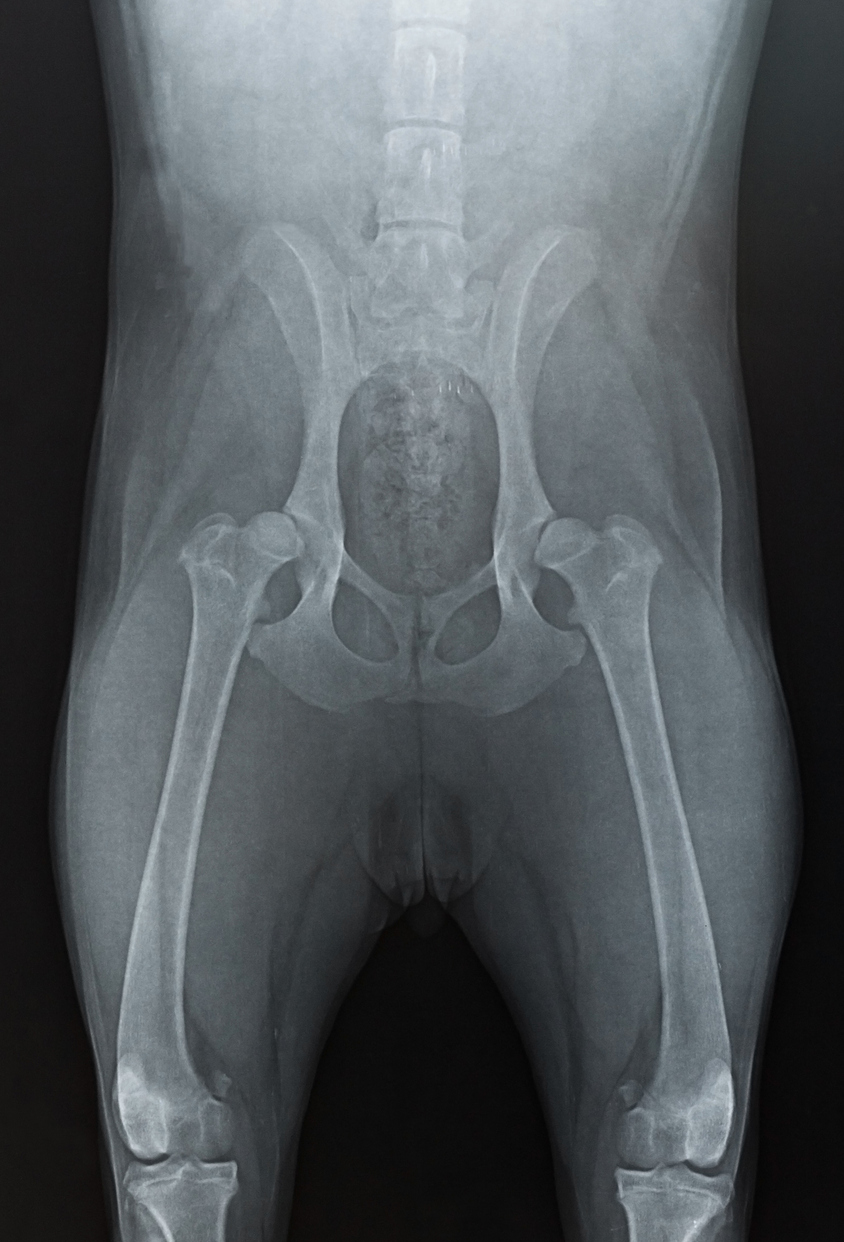Canine Hip Dysplasia: Croney Research Group
What is Canine Hip Dysplasia?
Canine hip dysplasia is a hereditary condition where the hip sockets are abnormally formed. This leads to joint pain and instability. Many dogs also develop arthritis. Movement can become increasingly painful, and some dogs lose mobility.

What causes Canine Hip Dysplasia?
Hip dysplasia is hereditary, and more common in large breed dogs (although some smaller breeds are also at risk). Other factors that can contribute to hip dysplasia include rapid early growth, intense exercise, and being overweight.
What are Signs of Hip Dysplasia?
Dogs with hip dysplasia may limp, be hesitant to jump, have lameness in the hind legs, or walk with an unusual gait. They may experience pain and stiffness when moving. Dogs with hip dysplasia may place more weight on the front legs. Decreased muscle mass in the hind legs may also be seen.
How is Hip Dysplasia Diagnosed?

Although hip dysplasia is hereditary, it is caused by multiple genes, and no genetic test has been developed that can identify it. A definitive diagnosis of hip dysplasia requires x-rays to measure how loose the joint is (laxity). Dogs usually need anesthesia for this process. There are two options for diagnosis:
OFA (Orthopedic Foundation for Animals): Dogs are x-rayed by their primary veterinarian, and the x-rays are sent for assessment by radiologists. Dogs can be given a preliminary assessment if they are at least 12 months of age and a definitive assessment if they are at least 24 months of age.
PennHIP: Dogs are x-rayed and assessed by trained veterinarians. PennHIP is more expensive but dogs can be assessed at 4 months of age or older.
Is there treatment for Canine Hip Dysplasia?
Options for managing hip dysplasia include physical therapy, weight loss, and exercise restriction. Dogs may also benefit from medications for pain and inflammation. Some dogs, especially dogs who are young when diagnosed, are candidates for surgery which can eliminate or reduce pain from hip dysplasia.
How can I help the dogs in my breeding program?
Keep your dogs at a healthy weight and feed them dog food for their age and breed. Young dogs should not be raised on slippery surfaces, and should be exercised on softer surfaces, such as play yards of grass/dirt.
Talk to your veterinarian at the first signs of lameness or limping. Most interventions work best on puppies, before skeletal growth is complete.
Screen your breeding dogs for hip dysplasia, especially when you breed dogs at higher risk. We strongly encourage all breeders to register the results with OFA.
Your veterinarian can help you make breeding decisions based on your dog’s test results. The goal is to reduce the risk of passing on this condition to puppies and your future breeding dogs. If you breed dogs before they reach 24 months of age, you may prefer to screen dogs through PennHIP.


Breeds most commonly affected by hip dysplasia
|
|
Large breeds are more likely to be impacted by hip dysplasia. However, some smaller breeds are also predisposed.
Information about OFA screening ofa.org/diseases/hip-dysplasia/
Information about PennHIp info.antechimagingservices.com/pennhip/
Canine Hip Dysplasia statistics by breed (OFA): ofa.org/chic-programs/browse-by-breed/
Topic(s): Bare Bones Basics, Breeder Resource, Health, Reproductive Healthcare, Veterinary Care